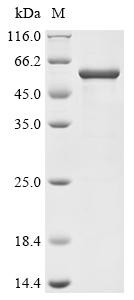Cookie preferences
This website uses cookies, which are necessary for the technical operation of the website and are always set. Other cookies, which increase the comfort when using this website, are used for direct advertising or to facilitate interaction with other websites and social networks, are only set with your consent.
Configuration
Technically required
These cookies are necessary for the basic functions of the shop.
"Allow all cookies" cookie
"Decline all cookies" cookie
CSRF token
Cookie preferences
Currency change
Customer-specific caching
FACT-Finder tracking
Individual prices
Selected shop
Session
Comfort functions
These cookies are used to make the shopping experience even more appealing, for example for the recognition of the visitor.
Note
Show the facebook fanpage in the right blod sidebar
Statistics & Tracking
Affiliate program
Conversion and usertracking via Google Tag Manager
Track device being used

If you have any questions, please use our Contact Form.
You can also order by e-mail: info@biomol.com
Larger quantity required? Request bulk
You can also order by e-mail: info@biomol.com
Larger quantity required? Request bulk
Organism: Homo sapiens (Human). Source: E.coli. Expression Region: 1-433aa. Protein Length:... more
Product information "Nuclear factor NF-kappa-B p105 subunit (NFKB1), partial, human, recombinant"
Organism: Homo sapiens (Human). Source: E.coli. Expression Region: 1-433aa. Protein Length: Partial. Tag Info: C-terminal 6xHis-tagged. Target Protein Sequence: MAEDDPYLGR PEQMFHLDPS LTHTIFNPEV FQPQMALPTD GPYLQILEQP KQRGFRFRYV CEGPSHGGLP GASSEKNKKS YPQVKICNYV GPAKVIVQLV TNGKNIHLHA HSLVGKHCED GICTVTAGPK DMVVGFANLG ILHVTKKKVF ETLEARMTEA CIRGYNPGLL VHPDLAYLQA EGGGDRQLGD REKELIRQAA LQQTKEMDLS VVRLMFTAFL PDSTGSFTRR LEPVVSDAIY DSKAPNASNL KIVRMDRTAG CVTGGEEIYL LCDKVQKDDI QIRFYEEEEN GGVWEGFGDF SPTDVHRQFA IVFKTPKYKD INITKPASVF VQLRRKSDLE TSEPKPFLYY PEIKDKEEVQ RKRQKLMPNF SDSFGGGSGA GAGGGGMFGS GGGGGGTGST GPGYSFPHYG FPTYGGITFH PGTTKSNAGM KHG. Purity: Greater than 90% as determined by SDS-PAGE. Endotoxin: Not test. Biological Activity: n/a. Form: Liquid or Lyophilized powder. Buffer: If the delivery form is liquid, the default storage buffer is Tris/PBS-based buffer, 5%-50% glycerol. If the delivery form is lyophilized powder, the buffer before lyophilization is Tris/PBS-based buffer, 6% Trehalose, pH 8.0. Reconstitution: We recommend that this vial be briefly centrifuged prior to opening to bring the contents to the bottom. Please reconstitute protein in deionized sterile water to a concentration of 0.1-1.0 mg/mL.We recommend to add 5-50% of glycerol (final concentration) and aliquot for long-term storage at -20 °C/-80 °C. Our default final concentration of glycerol is 50%. Customers could use it as reference. Storage: The shelf life is related to many factors, storage state, buffer ingredients, storage temperature and the stability of the protein itself. Generally, the shelf life of liquid form is 6 months at -20 °C/-80 °C. The shelf life of lyophilized form is 12 months at -20 °C/-80 °C. Notes: Repeated freezing and thawing is not recommended. Store working aliquots at 4 °C for up to one week. Relevance: NF-kappa-B is a pleiotropic transcription factor present in almost all cell types and is the endpoint of a series of signal transduction events that are initiated by a vast array of stimuli related to many biological processes such as inflammation, immunity, differentiation, cell growth, tumorigenesis and apoptosis. NF-kappa-B is a homo- or heterodimeric complex formed by the Rel-like domain-containing proteins RELA/p65, RELB, NFKB1/p105, NFKB1/p50, REL and NFKB2/p52 and the heterodimeric p65-p50 complex appears to be most abundant one. The dimers bind at kappa-B sites in the DNA of their target genes and the individual dimers have distinct preferences for different kappa-B sites that they can bind with distinguishable affinity and specificity. Different dimer combinations act as transcriptional activators or repressors, respectively. NF-kappa-B is controlled by various mechanisms of post-translational modification and subcellular compartmentalization as well as by interactions with other cofactors or corepressors. NF-kappa-B complexes are held in the cytoplasm in an inactive state complexed with members of the NF-kappa-B inhibitor (I-kappa-B) family. In a conventional activation pathway, I-kappa-B is phosphorylated by I-kappa-B kinases (IKKs) in response to different activators, subsequently degraded thus liberating the active NF-kappa-B complex which translocates to the nucleus. NF-kappa-B heterodimeric p65-p50 and RelB-p50 complexes are transcriptional activators. The NF-kappa-B p50-p50 homodimer is a transcriptional repressor, but can act as a transcriptional activator when associated with BCL3. NFKB1 appears to have dual functions such as cytoplasmic retention of attached NF-kappa-B proteins by p105 and generation of p50 by a cotranslational processing. The proteasome-mediated process ensures the production of both p50 and p105 and preserves their independent function, although processing of NFKB1/p105 also appears to occur post-translationally. p50 binds to the kappa-B consensus sequence 5'-GGRNNYYCC-3', located in the enhancer region of genes involved in immune response and acute phase reactions. In a complex with MAP3K8, NFKB1/p105 represses MAP3K8-induced MAPK signaling, active MAP3K8 is released by proteasome-dependent degradation of NFKB1/p105. Reference: "The full-ORF clone resource of the German cDNA consortium." Bechtel S., Rosenfelder H., Duda A., Schmidt C.P., Ernst U., Wellenreuther R., Mehrle A., Schuster C., Bahr A., Bloecker H., Heubner D., Hoerlein A., Michel G., Wedler H., Koehrer K., Ottenwaelder B., Poustka A., Wiemann S., Schupp I. BMC Genomics 8:399-399(2007). Function: nan
| Keywords: | NFKB1, Recombinant Human Nuclear factor NF-kappa-B p105 subunit (NFKB1), partial |
| Supplier: | Cusabio |
| Supplier-Nr: | EP015759HU1 |
Properties
| Application: | Activity not tested |
| Conjugate: | No |
| Host: | E.coli |
| Species reactivity: | human |
| MW: | 54.4 kD |
| Purity: | >90% (SDS-PAGE) |
Database Information
| KEGG ID : | K02580 | Matching products |
| UniProt ID : | P19838 | Matching products |
| Gene ID | GeneID 4790 | Matching products |
Handling & Safety
| Storage: | -20°C |
| Shipping: | +4°C (International: +4°C) |
Caution
Our products are for laboratory research use only: Not for administration to humans!
Our products are for laboratory research use only: Not for administration to humans!
You will get a certificate here
Viewed


